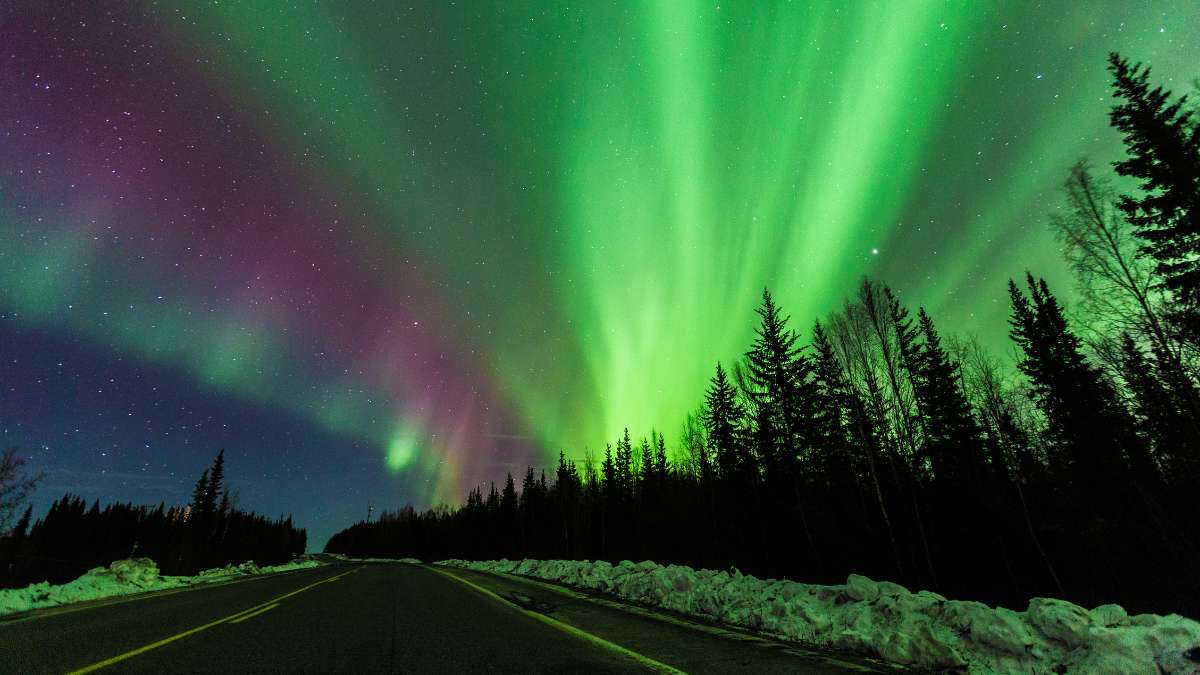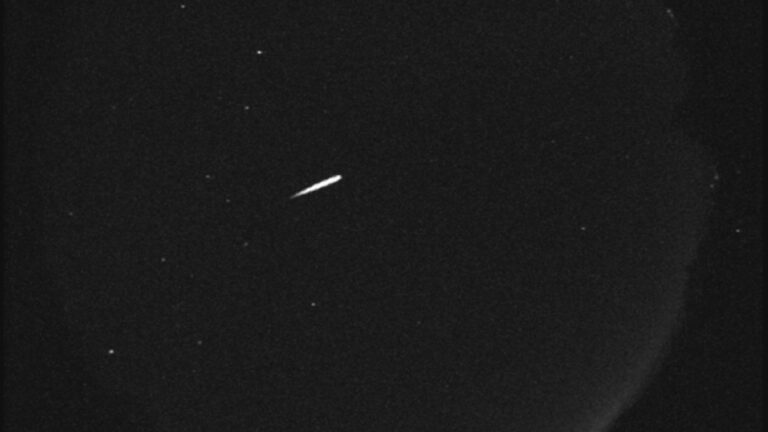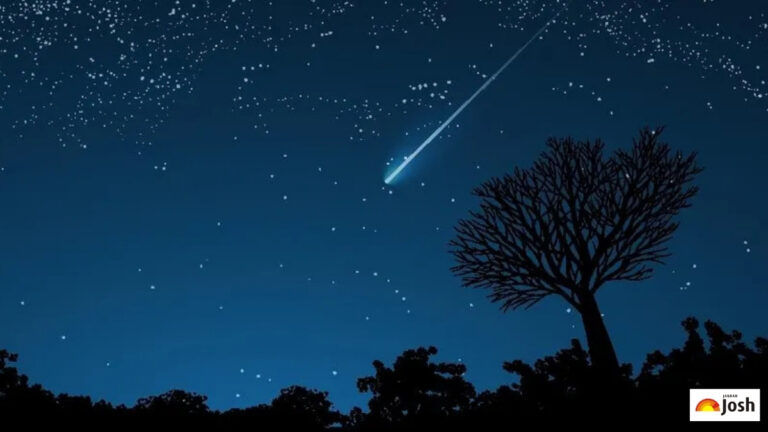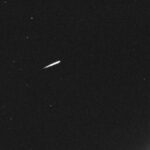The Aurora Borealis, commonly referred to as the Northern Lights, is one of nature’s most spectacular displays. This Thursday evening, residents across parts of the United States may have the opportunity to witness this breathtaking phenomenon as it illuminates the night sky. The mesmerizing colors are a result of charged solar particles interacting with the Earth’s atmosphere. While these vibrant light shows are typically confined to higher latitudes, periods of heightened geomagnetic activity can push the boundaries, allowing the auroras to be visible further south.
Experts in space weather are closely monitoring the interactions that will influence aurora visibility in various northern regions, based on the behavior of solar winds and their impact on Earth’s magnetic field. Although there is no certainty that the lights will be visible everywhere, those eager to catch a glimpse should seek out locations with minimal light pollution and clear skies, as these conditions are essential for the best viewing experience.
Spooky, but beautiful: the northern lights glowed through the cloudy Manitoba night sky 🌌✨ pic.twitter.com/q50jh63Zgu
— AccuWeather (@accuweather) October 2, 2025
U.S. States Where the Aurora Can Be Seen on Thursday Night
Here is a detailed list of the top nine U.S. states where the aurora may be visible on Thursday night, along with suggested locations and optimal viewing times:
Alaska
Alaska is renowned as the premier destination for aurora sightings due to its geographical advantage and frequent geomagnetic activity. Fairbanks and Anchorage are two cities where the Northern Lights are commonly observed. On Thursday night, residents in Alaska should direct their gaze to the northern sky between 10 p.m. and 2 a.m. local time for a promising chance to witness the vibrant displays of light.
Washington
In northern Washington and its rural areas, there may be an opportunity to catch a glimpse of the auroras if geomagnetic activity escalates, particularly in locations away from urban light pollution. On Thursday night, observers might see faint auroras appearing along the horizon, especially from elevated locations such as the North Cascades. The prime viewing times are from 10 p.m. to 1 a.m., provided the skies are clear and solar winds remain active.
Idaho
Occasionally, northern Idaho has the chance to witness the auroras during significant geomagnetic events, particularly in areas around Coeur d’Alene and the Panhandle. The forecast for Thursday evening suggests limited visibility, but with some luck, residents might catch a hint of the lights. For the best chance, it is advisable to move away from city lights, face north, and attempt long exposure photography between 11 p.m. and 2 a.m..
Montana
Montana’s expansive skies make it an ideal location for aurora viewing, especially during intense solar storms. Cities such as Great Falls, Billings, and northern regions near the Canadian border are excellent spots for witnessing this natural spectacle. Should conditions be favorable on Thursday evening, residents may see green arcs or shifting glows in the sky. The best opportunities for viewing will be in rural settings between 10 p.m. and 2 a.m..
North Dakota
North Dakota is situated in a prime location for aurora sightings, particularly during periods of moderate geomagnetic activity. The forecast for Thursday night indicates a chance of faint auroras in the northern and central regions of the state. Observers should aim for rural locations around Grand Forks or Fargo, where long sightlines enhance the viewing experience.
South Dakota
Even though South Dakota is situated further from the Canadian border, auroras can still be spotted during significant solar storm activity, weather permitting. On Thursday night, there may be faint glows visible in the northern sky, particularly in the Black Hills region, which offers the best chance for aurora activity. Residents are encouraged to find quiet, dark locations away from the city lights of Sioux Falls or Rapid City.
New York & New England (Vermont, New Hampshire, Maine)
In the northern parts of New York and New England, auroras may occasionally be visible during significant geomagnetic storms. This Thursday night, there is a possibility of faint visibility towards the Adirondacks, the Green Mountains in Vermont, and northern Maine. The best strategy is to seek elevated, rural spots with a clear view of the northern sky. Ideal viewing times typically range from 11 p.m. to 2 a.m., although a faint arc might be visible slightly earlier if activity is strong enough.
Minnesota
Minnesota is a favored location for aurora enthusiasts, particularly along the North Shore of Lake Superior and within the Boundary Waters. The activity on Thursday night may yield faint to moderate auroras visible from Duluth and beyond. The key to a successful viewing experience is having clear, dark skies. Optimal viewing conditions are expected between 10 p.m. and 2 a.m., especially in northern counties close to the Canadian border.
Wisconsin
Wisconsin occasionally experiences auroral displays, primarily in its northern regions near Lake Superior. On Thursday, residents in northern Wisconsin may witness faint green arcs if geomagnetic activity intensifies. The Apostle Islands and rural northern counties are ideal locations for observing the auroras, and the best viewing times are recommended between 11 p.m. and 2 a.m. when conditions are most favorable.















